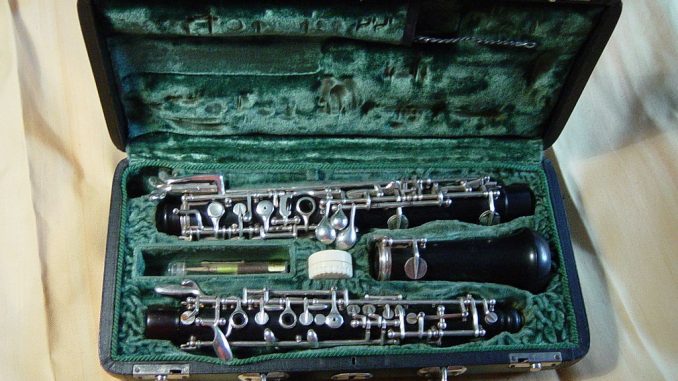
The Merriam-Webster dictionary defines collage as “a work of art that is made by attaching pieces of different materials (such as paper, cloth, or wood) to a flat surface.”
On Tuesday, Sept. 20 at Studley Theatre, Deputy Chair of the Department of Music Joel Evans, lecturer Susan Seligman and adjunct faculty member Ruthanne Schempf performed in the faculty recital, titled “Collage.” The performance coincided with the annual fall concert series and featured three pieces from distinct times periods. Seligman opened the program on cello, Evans eerily enchanted on oboe and Schempf dazzled through black and white keys.
“The assortment of pieces really have no relationship to each other. We thought we’d just pick three diverse pieces of music,” Evans said. “Such as you would do with a collage — different types of color, design and material all presented on the same background.”
According to Evans, he and Schempf started captivating crowds in 1984. The two are musically inseparable and decided to perform a piece that would feature the pianist in a role beyond that of an accompanist. They chose Maurice Ravel’s “Le Tombeau de Couperin,” which highlights the pair’s separate solo abilities.
“His playing inspires my playing,” Schempf said.
The 18th-century suite “Sonata in A minor” by Georg Philipp Telemann opened the recital, and the more modern 20th-century “Fantasistykker op.2” by Carl Nielson lay in the middle. Ravel’s Baroque suite closed the show. The bookend pieces were done in the style of a Baroque suite.
The evening erupted with a quiet bang as the three musicians resumed the powerful position of a trio. A hush fell over the congregation while the lights dimmed. Seligman steadied the base of her cello by thrusting it into the smooth wooden floorboards onstage. Telemann’s work consisted of beautiful sweeping strings, poignant oboe puffs and subtle piano movements.
Applause echoed throughout the theatre. Three musicians walked off stage. Only two returned. Evans admitted that it was customary to add a bass line instrument during the Baroque period. He provided a brief introduction and the duo moved on to Nielson’s Danish folk melodies. And then the showstopper commenced.
“This piece requires an explanation,” Evans acknowledged.
Ravel wrote it in memory of the French Baroque composer François Couperin, but also every dance suite serves as a tribute to dear friends Ravel lost in WWI. “Prelude” acted like an introduction. Schempf took over for “Fugue,” and this rotation continued until “Toccata” emerged from nowhere, only a movement later. The audience, accustomed to the routine, witnessed Evans sit on the bench beside Schempf. She bulldozed into the song. Evans flipped page after page for her. She touched each key for a second in a staccato motion all the while shifting between a build and release of organized chaos. Bombastic notes bounced around the arena walls, all of which were played by the mad scientist known as Schempf, whom the crowd later showered in ovation.
“The problem with that ‘Toccata’ is there’s no place to stop,” Schempf said. “It’s a continual motion. It’s a subliminal experience.”
“Menuet” and “Rigaudon” further exemplified Evans ability to dig deep within his soul to produce bright and often mysterious music.
First-year computer science major Ethan Massa attended the concert for his Introduction to Music class. He found the event to be a refreshing experience of new music.
“My favorite piece was definitely the ‘Toccata’ when she was going ham on the keys,” Massa said, smiling.
